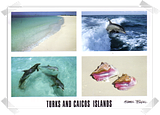 Postcard was sent by Michael, a former student from The Netherlands - a person who travels around the world and owns page called Starring you, you should totally check it out! An interesting perspective and view on things that take place in countries He visits. To be specific, the card shows a child, reading something, on the top of the barricades that actually were built during the protests. The inscription says "Library Maidan".
Postcard was sent by Michael, a former student from The Netherlands - a person who travels around the world and owns page called Starring you, you should totally check it out! An interesting perspective and view on things that take place in countries He visits. To be specific, the card shows a child, reading something, on the top of the barricades that actually were built during the protests. The inscription says "Library Maidan".Probably many of you heard or followed the happenings that took place In Ukraine during last 2 years. Euromaidan (literally "Euro Square") was a wave of demonstrations and civil unrest in Ukraine, which began on the night of 21 November 2013 with public protests in Maidan Nezalezhnosti in Kiev, demanding closer European integration. The scope of the protests expanded, with many calls for the resignation of President Viktor Yanukovych and his government. The protests ultimately led to the 2014 Ukrainian revolution. Many protesters joined because of the violent dispersal of protesters on 30 November and "a will to change life in Ukraine". By 25 January 2014, the protests had been fuelled by the perception of "widespread government corruption", "abuse of power", and "violation of human rights in Ukraine".
The protests reached a climax during mid-February. On 18 February, the worst clashes of Euromaidan broke out after the parliament did not accede to demands that the Constitution of Ukraine be rolled back to its pre-2004 form, which would lessen presidential power. Police and protesters fired guns, with both live and rubber ammunition, in multiple locations in Kiev. The riot police advanced towards Maidan later in the day and clashed with the protesters but did not fully occupy it. The fights continued through the following days, in which the vast majority of casualties took place. On the night of 21 February, Maidan vowed to go into armed conflict if Yanukovych did not resign by 10:00 AM. Subsequently, the riot police retreated and Yanukovych and many other high government officials fled the country. Protesters gained control of the presidential administration and Yanukovych's private estate. The next day, the parliament removed Yanukovych from office, replaced the government with a pro-European one, and ordered that Yulia Tymoshenko be released from prison. In the aftermath, the Crimean crisis began amid pro-Russian unrest.
































.jpg)

















.jpg)




















